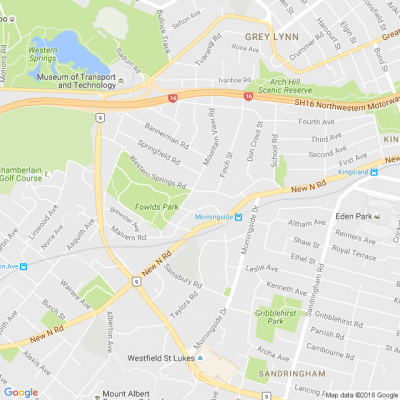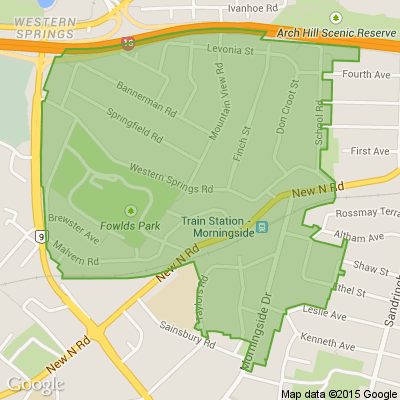Feral pigs almost eradicated from Waiheke Island
Nearly all the feral pigs have been eliminated from Auckland's Waiheke Island.
The pig control initiative is part of Auckland Council's work under the Regional Pest Management Plan to protect the island's environment, human health and taonga.
Auckland Council senior conservation advisor Deryn Dromgoole said the feral pig control programme had been undertaken strategically across Waiheke over the last four years.
The council had worked closely with landowners to achieve results, he said.
“We’re now at a point where feral pigs remain at very limited numbers in a localised area on the island and we believe that eradication can be achieved sooner than we had originally anticipated.”
Feral pigs can have significant negative impacts on native ecosystems, primary production, infrastructure and are potential vectors of kauri dieback disease and bovine tuberculosis.
Ngāti Pāoa Trust Board co-chair Danella Roebeck said the trustees were supportive of the feral pig control work at their Waiheke Station.
“In addition to the negative impacts feral pigs can have on indigenous species, they also affect production systems by damaging pasture and grain crops, and, more rarely, killing and eating lambs," Roebeck said.
Waiheke Local Board Chair Cath Handley said Waiheke was free of kauri dieback disease and the board needed to be proactive to keep it that way.
"Pigs damage kauri roots which can cause infections to start, and pigs roaming can spread the disease.
“We also need to make sure our waterways are protected from erosion and sedimentation that can result from pig rooting.”
A feral pig is caught in the headlights of a motion capture camera.

Poll: Should all neighbours have to contribute to improvements?
An Auckland court has ruled a woman doesn’t have to contribute towards the cost of fixing a driveway she shares with 10 neighbours.
When thinking about fences, driveways or tree felling, for example, do you think all neighbours should have to pay if the improvements directly benefit them?

-
82.1% Yes
-
15.2% No
-
2.7% Other - I'll share below
What's your favourite recipe for courgettes?
Kia ora neighbours. If you've got a family recipe for courgettes, we'd love to see it and maybe publish it in our magazine. Send your recipe to mailbox@nzgardener.co.nz, and if we use it in the mag, you will receive a free copy of our January 2025 issue.

The Story of Hine and Tāne Mahuta - Day 12
Long ago, Hine-te-Aroha, a daughter of the great chief Tāwhaki, was known for her beauty and devotion to the atua (gods). She was deeply connected to Tāne Mahuta, the atua of the forest and creator of humankind. In a past life, Hine had pledged herself to Tāne Mahuta, dedicating her aroha (love) and wairua (spirit) to him.
However, her father Tāwhaki disapproved of Tāne Mahuta. He saw Tāne as a humble being who spent his days nurturing the ngahere (forest) and the creatures of the world, living a simple life far from the wealth and prestige of a chief. Tāwhaki wanted his daughter to marry a great warrior or chief, someone who could uphold their mana (status). When Tāwhaki held a grand celebration to find a suitable match for Hine, Tāne Mahuta, knowing his humble lifestyle would draw scorn, chose not to attend.
Despite Tāne’s warning, Hine attended the celebration out of loyalty to her father. During the festivities, Tāwhaki openly ridiculed Tāne Mahuta, speaking of his simple ways and lack of riches. Hine, unable to bear the insults to her beloved, declared her undying love for Tāne and consigned herself to the ceremonial fire, joining the wairua realm.
Tāne Mahuta, upon learning of this, was overwhelmed with aroha and grief. He sent his mighty winds, led by Tāwhirimātea, to dismantle Tāwhaki’s gathering and humble the chief for his arrogance. Yet, Tāne’s love for Hine remained steadfast, and he vowed to bring her back. Hine was reborn as Hine-te-Waiora, the daughter of the sacred mountain ranges.
---
The Test of Devotion
As she grew, Hine-te-Waiora remembered her bond with Tāne Mahuta and began her karakia (prayers) to him. She vowed to marry only Tāne, despite her father showing her many wealthy and powerful suitors. Her devotion turned into months of rigorous karakia and fasting atop a sacred maunga (mountain).
The ngahere (forest) around her became peaceful, the winds softened, and even the fiercest creatures of the wild grew tame in her presence. Seasons came and went, but her focus never wavered.
Meanwhile, Tāne Mahuta, still grieving his past loss, had vowed never to take another partner. However, the atua noticed the chaos spreading in the human world as malevolent forces thrived unchecked. It was prophesied that only a child born of Tāne Mahuta and Hine-te-Waiora could restore balance.
To test her aroha and devotion, Tāne disguised himself as an old koroua (elder) and visited her. Pretending to doubt Tāne’s worth, he mocked him, saying, “Why would you dedicate yourself to a humble atua who lives among trees and birds? You could marry a great chief who could provide wealth and status.”
Hine-te-Waiora, though respectful, became enraged. “You may be an elder, but your words dishonor the one I love. Tāne Mahuta is the kaitiaki (guardian) of all life, and his mana is unmatched. I will hear no more of your insults!”
At that moment, the koroua revealed himself as Tāne Mahuta. “You have proven your unwavering aroha and devotion,” he said with pride. He took her as his bride, and together they returned to the sacred ngahere to restore harmony to the world.
---
Moral of the Story
This story teaches us that aroha (love) and pono (devotion) have the power to overcome all obstacles. When guided by sincerity and deep faith, even the greatest challenges can be transformed. Like Hine-te-Waiora, we are reminded to remain steadfast in our values and trust in the wairua to guide us. True love is not swayed by wealth or appearances but rooted in deep connection and understanding. Through aroha and devotion, balance and harmony can be restored to ourselves and the world around us.







 Loading…
Loading…











